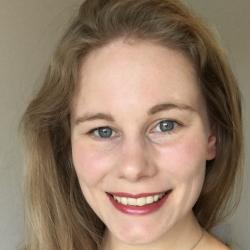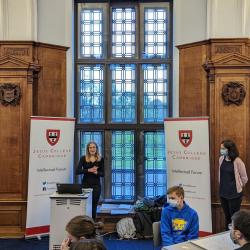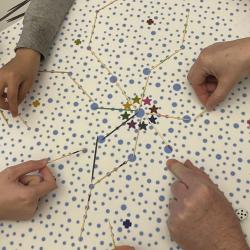Affiliations:
Senior Research Associate, Many-Body Quantum Dynamics
College Research Associate, King’s College Cambridge
Senior Research Associate, Jesus College Intellectual Forum
Research
I research cold atom technologies to study the fundamentals of science. I am currently developing a new detector for dark matter and gravitational waves with the AION consortium (https://aion-project.web.cern.ch). This detector is based on atom interferometry with ultracold strontium, where clouds of atoms are separated and recombined to give information about the difference in the paths they travel. I am particularly interested in researching new methods of cooling and manipulating atoms, and lead a team developing techniques for transport and cooling of ultracold strontium. I also work on a quantum simulation experiment, where cold atoms trapped in lattices of laser light are used to create an experimental simulation of the quantum behaviour of real materials.
You can find out more about these projects here.
Follow me on Twitter @UltracoldTiff
Schools and public engagement
I love discussing science, and thinking of interesting and interactive ways to share the incredible research I’m lucky enough to see and take part in. I have run science workshops with the Jesus College Intellectual Forum and Cambridge Festival, and various initiatives with the Cavendish Laboratory and Cambridge colleges.
With funding from the Cambridge University Public Engagement Fund I run workshops for primary school groups (KS2) about atoms, their uses and how we study them. If you represent a school and would like to work with me please get in touch by email.



